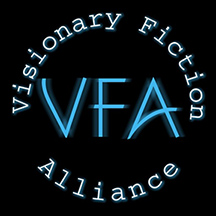I had a very creative week. As with many of my story breakthroughs, it happened at the gym, while running on the treadmill. I knew when I posed my story question, by the time my workout was over, I’d have my answer, but not necessarily to the question I asked. When it comes to tapping into the right brain, scenes typically appear out of order. I view the first draft as a puzzle, except I have no idea how many pieces exist until after I write, “The End.”
I put on the dance music playlist on my Ipod, started running, and asked my right brain to show me a strong climax for Forever Valley. I’ve done this several times before but was shown answers to different parts of my story; however, several days ago, I got what I asked for. When I left the gym, I ran to my car, got out a pen from the glove box and wrote out the climax, which also included the completion of the character arcs. Now that’s a productive run!
The three questions I ask before I begin the scene choreography:
What characters are in the scene?
Where are they?
What’s the scene goal?
To get the best possible scene, I have to envision it first. I do this by running through it in pictures. There can be no trace of language for this to work. It’s like watching a silent movie, and I formulate no opinions or judgements during the transmission. That’s left brain banter, and it’s a big no no when engaged in right brain work. I continue observing until something pops out at me. Once that happens, I begin to analyze the scene, interpreting what and why it’s happening.
What do the characters say?
How do they react?
I continue the analysis until the language syncs with the visuals. This works so well, I never fear writer’s block or running out of ideas. With a strong visual, it’s hard not to come up with a strong scene. The difficulty—for me, at least—is finding the most accurate words to describe it. That takes a lot more effort from me than scene creation.
For anyone interested, here is my method of tapping into the right brain.
- Find a place or situation where you can disappear into your story world. Working out, running, walking, taking a bath and lying down listening to music are some ways I connect to my right brain.
- Pose the three questions, but do it without expecting answer to the questions you asked. Expectations are like a roadblock to the right brain. Get rid of them, and you’re right brain will throw out some amazing ideas for other scenes in your story.
- Place your characters in the proper setting and watch them react, without any hint of language or judgements. There is no such thing as a stupid idea in this exercise. Unlike real life, stupid oftentimes leads to brilliance in the right brain. Just keep watching stupid until it evolves into a brilliant scene. Being able to tap into the right brain at will makes writing entertaining and fast. Please let me know if this works for you. I always love to hear successful writer stories.
Love and light,
Eleni






Great right brain scene plotting ideas. I loe this!
Thanks Jodine!
Thanks Jodine!